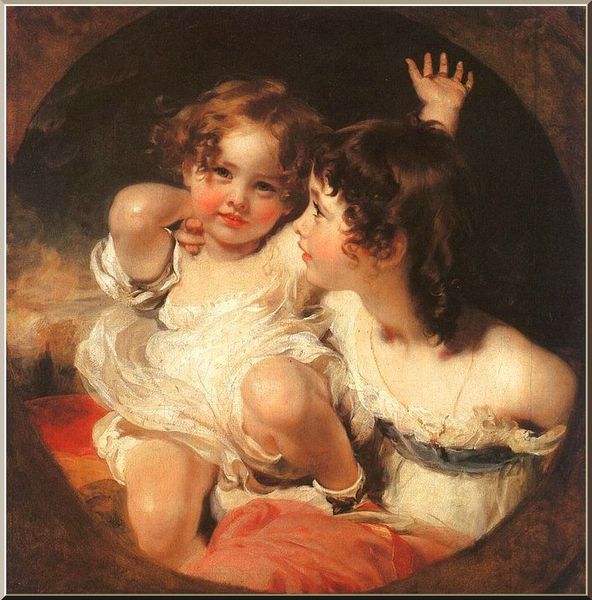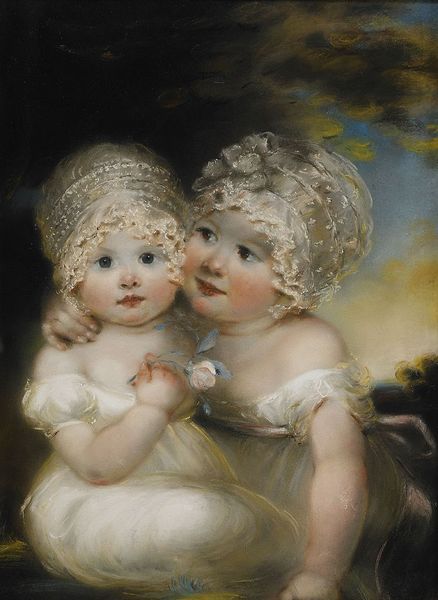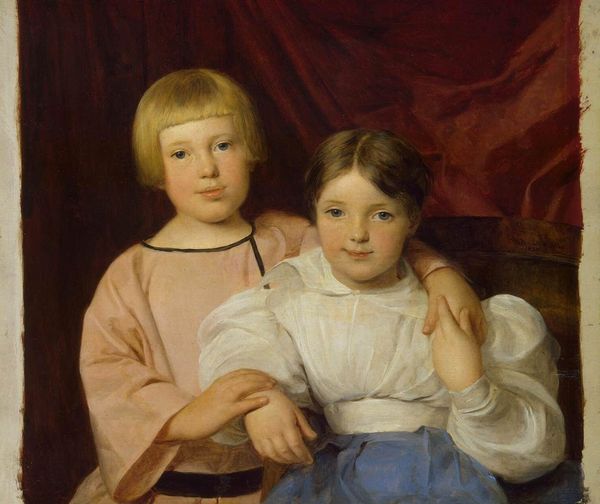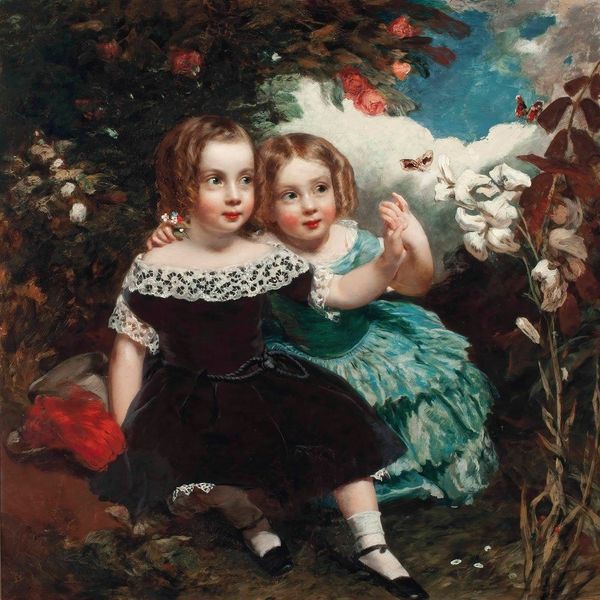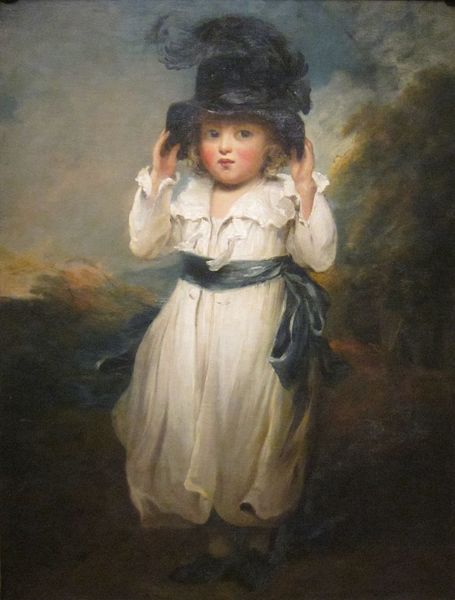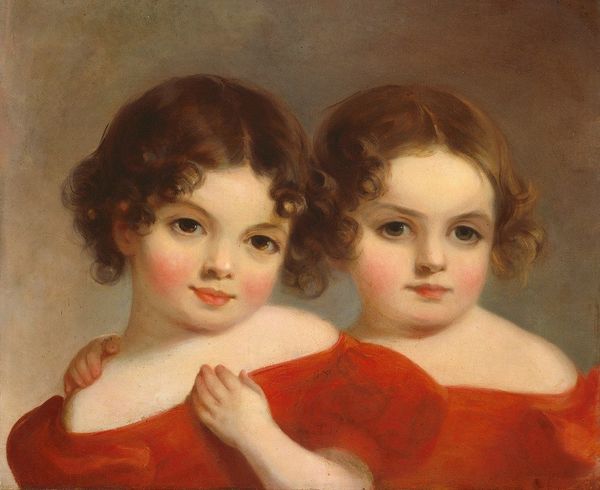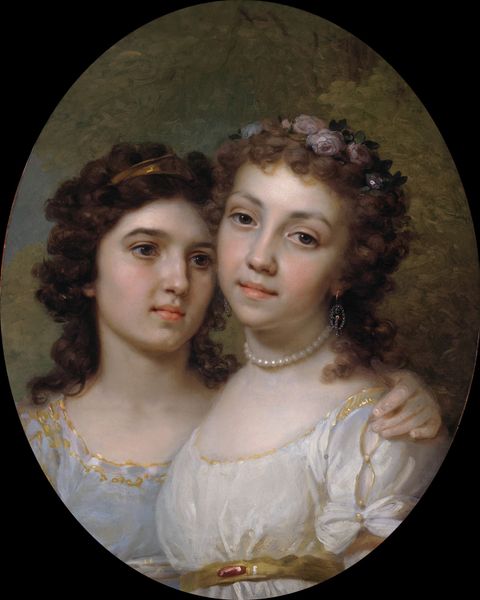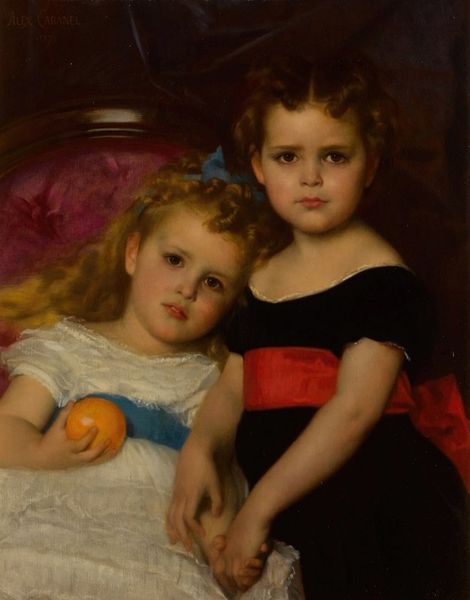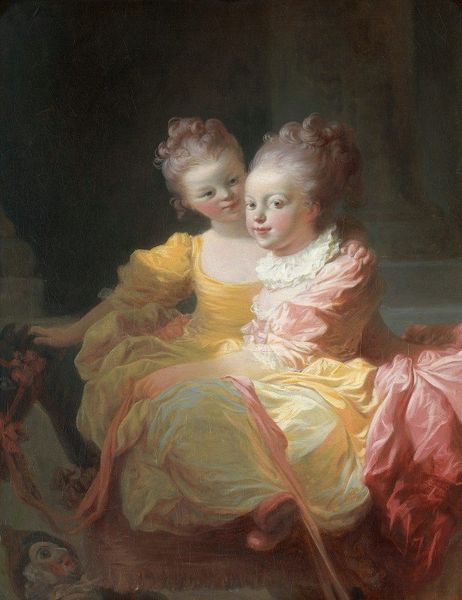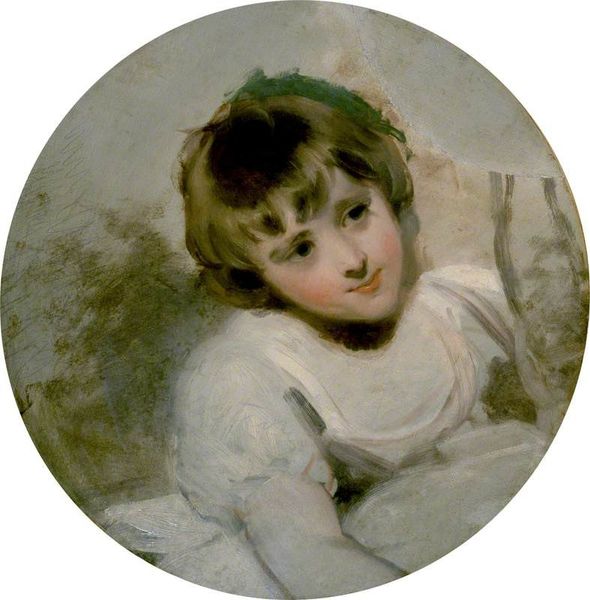
painting, oil-paint
#
portrait
#
painting
#
oil-paint
#
oil painting
#
romanticism
#
genre-painting
#
portrait art
Copyright: Public domain
Editor: This is Thomas Lawrence's "Emily and Harriet Lamb as Children," painted in 1792, using oil paint. The girls are dressed in matching white dresses with pink sashes. They appear joyful and spontaneous. How do you interpret this work beyond its immediate visual appeal? Curator: Well, I find this painting fascinating when considered within the broader context of eighteenth-century portraiture and evolving social attitudes toward childhood. We see innocence, but also hints of performance, don't we? Lawrence was painting at a time when the concept of childhood was shifting. Do you see the contrast between the children's apparent freedom and the very constructed, almost theatrical presentation? Editor: Yes, I see what you mean. There's a performative aspect. Almost as though the artist is capturing a carefully crafted image of childhood innocence that might not fully represent the girls' lived experiences. It is romantic, but are we seeing reality or representation? Curator: Exactly. Consider the societal pressures placed on women during this era. Their roles were often pre-determined. To what extent are these portraits complicit in reinforcing such social constructs, even at this early stage of the subjects' lives? We are not just looking at individual children, but a construction of idealized femininity that served specific social and ideological functions. Do you notice, for example, how they are presented in matching dresses and similar poses, reinforcing a kind of conformity even within apparent freedom? Editor: That's a great point. The matching dresses definitely point to conformity and reinforce a standard of how young girls "should" look. It makes me think about how portraits of children are rarely just innocent depictions, they're statements of social class and expectations, too. Curator: Precisely! It becomes more than just a painting of two children. We gain insights into 18th-century views of family, gender, and social status. The surface prettiness belies a deeper exploration of cultural norms and the limited opportunities afforded to women in that time. Editor: I agree. Considering those points changes my perspective on the portrait. There is so much beneath the surface if one looks beyond the aesthetics. Thanks for sharing!
Comments
No comments
Be the first to comment and join the conversation on the ultimate creative platform.
